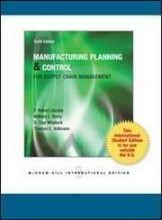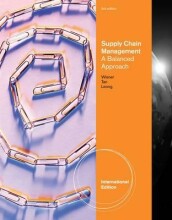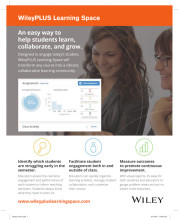Capacity planning and control
13 important questions on Capacity planning and control
Describe planning and control
- What activities should take place in the operation;
- When they should take place;
- What resources should be allocated to them.
Control:
- Understanding what is actually happening in the operation;
- Deciding whether there is a significant deviation from what should be happening;
- (if there is a deviation) changing resources in order to affect the operation's activities.
What's the role of capacity planning and control?
- To avoid unpleasant surprises like insufficient capacity and excess capacity.
Which 3 methods are there for rough - cut capacity planning?
- Capacity Planning Using Overall Factors (CPOF)
- Capacity Bills
- Resource Profiles
- Higher grades + faster learning
- Never study anything twice
- 100% sure, 100% understanding
Describe method 1: Capacity Planning Using Overall Factors (CPOF)
- Necessary: 1. Data from MPS, 2. Machine-hour per unit (Labor-hour per unit), 3. Historical workloads of the work centers.
Step 1: Overall machine-hour (or labor-hour) capacity requirements are estimated from MPS data
Step 2: The result is allocated to the work centers based on historical workloads --> Method is insensitive to changes in product mix
Describe method 2: Capacity Bills
- Requires more data than the CPOF method:
• Product structure
• Routing data
• Duration of operations
Step 1: Make the Bill of Capacity: indicates total time to produce one unit of an end-product (per work center)
Step 2: Use the MPS to estimate capacity requirements for each work center
Which assumption is not realistic related to CPOF and Capacity Bills?
Describe method 3: Resource profile
- Provides time-phased projections of capacity requirements for individual work centers
- Requires tracking of relatively short time periods (<1 week)
(we do not discuss this in this course)
Method 4: What are advantages and disadvantages of Capacity Requirements Planning (CRP)?
- Much more accurate information (especially important for shorter term)
Disadvantages:
- More data required
- More calculations
- More complexity
What's a Advanced Planning (& Scheduling) system (APS)?
- General (SAP-APO, Oracle, ...) or customized
- In practice they use complex systems --> don't know how they measure and maintain data.
- Some companies do not know which method they use... (system = black box)
Throughput of a system is determined by the bottleneck (constraints of system). Which types of system constraints are there?
- Personnel
- Materials
Other constraints (policy constraints):- Management
- Environment
- Behavior
- Lack of information
-... (often difficult to identify / measure)
How to make optimal use of the bottleneck capacity?
- Alternative routes (use of other machine)
- Larger batch sizes (less setup time)
--> Avoid any disturbances of the production process on the bottleneck machine:
- Preventive maintenance
- Buffer in front of bottleneck machine
- ...
Describe Theory of Constraints (M. Goldratt) (TOC)
TOC:
- System: number of activities that depend on each other
- Every system has
• A goal (one, measurable)
• Set of limiting constraints
- Drum-buffer-rope principle
- Five focussing steps
Describe the Drum-Buffer-Rope concept of TOC
- The fundamental assumption of DBR is that within any plant there is one or a limited number of scarce resources which control the overall output of that plant.
- Rope: revers to pull scheduling at the nonbottleneck work centers.
- Move material as quickly as possible through nonbottleneck work centers until it reaches the bottleneck. The work at the bottleneck is scheduled for maximum efficiency. Work again moves at maximum speed to the shipping dock.
The question on the page originate from the summary of the following study material:
- A unique study and practice tool
- Never study anything twice again
- Get the grades you hope for
- 100% sure, 100% understanding






























